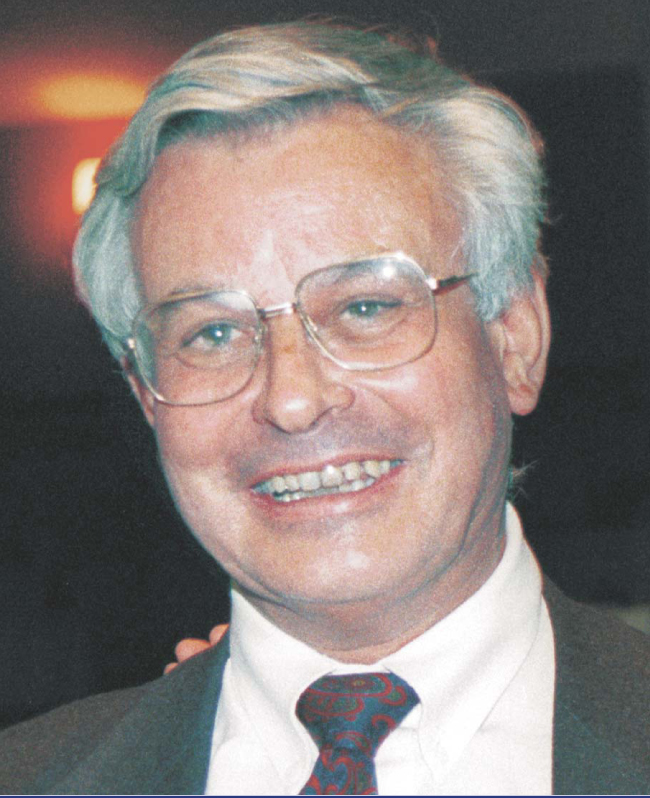Maurice René Georges Jacob
DOI: 10.1063/1.2774112
Maurice Jacob, a world-renowned theoretical physicist and longtime pillar of CERN, died unexpectedly in Geneva, Switzerland, on 2 May 2007 after a decade of chronic illness. Immensely enthusiastic and energetic, able to juggle research, lecturing, editorial duties, and community service with uncommon ease, Maurice was a dynamo who left an indelible impression on the worldwide particle-physics community.
The son of a noted French science educator, Maurice was born on 28 March 1933 in Lyon, France. He studied physics at the école Normale Supérieure and received his doctorate from the University of Paris in 1961. He wrote his thesis, “Formal Theory of Collisions and Helicity Eigenstates,” with Francis Perrin and Gian Carlo Wick as advisers.
His research interests were in theoretical particle physics, close to experiment. In collaboration with Wick, he wrote perhaps his most broadly influential paper, “On the General Theory of Collisions for Particles with Spin” (Annals of Physics , volume 7, page 404, 1959), while visiting Brookhaven National Laboratory as a student. The paper’s helicity-amplitude formalism, widely used in the 1960s and 1970s and a fixture today among experimenters, is enjoying a revival among quantum-chromodynamics (QCD) and string theorists.
Maurice made major contributions to our understanding of hadronic collisions at high energies through his studies of inclusive reactions, scaling, two-particle correlations, resonance production, heavy-particle production, and large-transverse-momentum jets. He and his colleagues interpreted the data through the quark–parton model and QCD. The flavor of that work can be sampled in The Quark Structure of Matter (World Scientific, 1992), a collection of eight of his publications. In the late 1980s, his interests turned to radiation problems and beam–beam disturbances in electron–positron colliders, and he began working with Tai Tsun Wu. He was among the first to recognize and pursue the potential of relativistic heavy-ion collisions. Maurice wrote extensively on the history of the physics at CERN’s Intersecting Storage Rings (ISR) and on the future prospects for CERN’s succession of colliders, including the Large Electron–Positron Collider and the Large Hadron Collider.
Maurice was a member of the Center for Nuclear Studies in Saclay from 1961 to 1967. He joined the theory division at CERN in 1967 and became a permanent member in 1972. Between his year at Brookhaven and 1972, he held visiting appointments at Caltech, SLAC, Yale University, and Fermilab. One of his outstanding accomplishments was the intellectual community he wove among theorists and experimentalists working at the ISR during the 1970s. In an ongoing series of ISR workshops, Maurice orchestrated the sharing of results, the testing of interpretations, and debates over the next steps. His lecture notes and conference reports disseminated well beyond CERN the excitement and puzzles of the ISR experiments. He was an exceptional editor, bringing his acute judgment to Physics Letters and serving as a founding editor of Physics Reports, which he quickly brought to the first rank of review journals. He edited or co-edited numerous volumes, including Infinitely CERN, a collection of memories from the lab’s first 50 years of research, 1954 to 2004.
Maurice provided inspired leadership to the CERN theory division from 1982 to 1988, and during the 1990s he took responsibility for CERN’s relations with its member states. Despite his illness, he continued to write and participate in CERN affairs long after his official retirement in 1998.
A zealous advocate for CERN and for European science, Maurice was a dedicated internationalist with loyal friends in every region. He was much in demand as a lecturer around the world. His membership on the advisory committee of Physics Today from 1996 to 2002 illustrates his commitment to the worldwide physics community. Maurice was president of the French Physical Society in 1985 and of the European Physical Society from 1991 to 1993, and he served on the scientific advisory committee of the European Space Agency in the 1990s. Maurice was a chevalier of France’s Legion of Honor and a member of the French Academy of Sciences, the Royal Swedish Academy of Sciences, and Academia Europaea. He received the Médaille d’argent of the CNRS in 1967.
A lover of the outdoors, Maurice was a wonderful companion on a mountain path and an avid observer and commentator on the flora, whether a common gentian or the rare génépi. He was extremely fond of his family vacation place in the southern Alps near Briançon, where he could hike and ski. He was a generous spirit and full of wisdom and empathy. We remember with affection his joy in science, his pedagogical gifts, his concern for institutions and individuals, and the pleasure he found in encouraging others. His scientific legacy lives in CERN’s bright future and in the outlook of many physicists influenced by his optimism, broad vision, and abiding curiosity.

Maurice Rané Georges Jacob
CERN

More about the Authors
J. David Jackson. 1 University of California, Berkeley, US .
Chris Quigg. 2 Fermi National Accelerator Laboratory, Batavia, Illinois, US .
